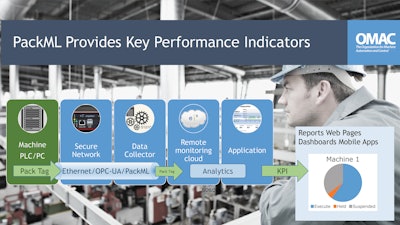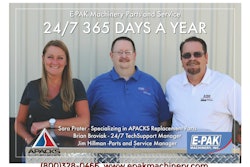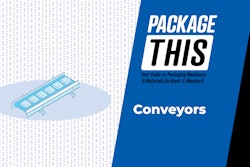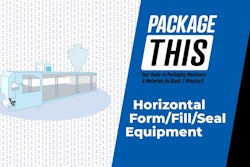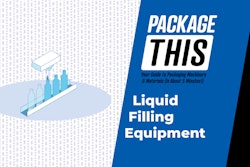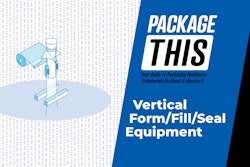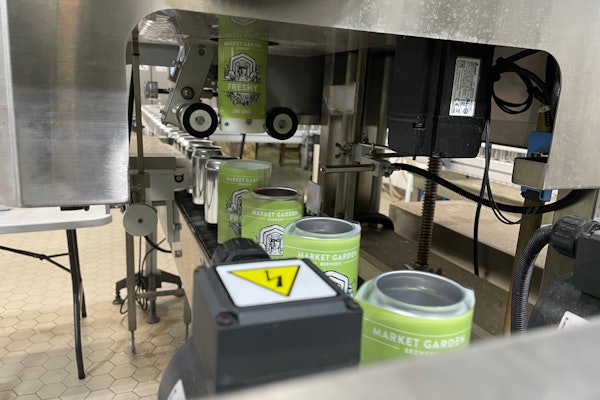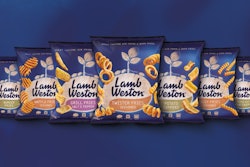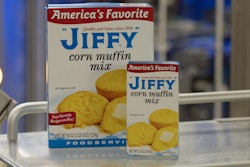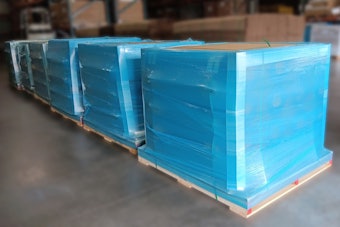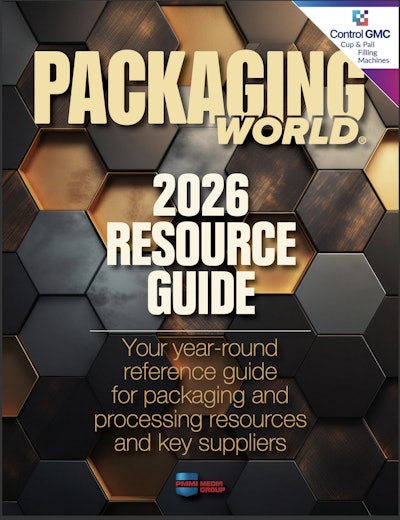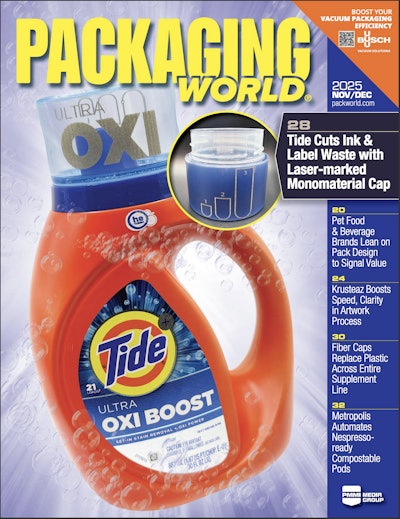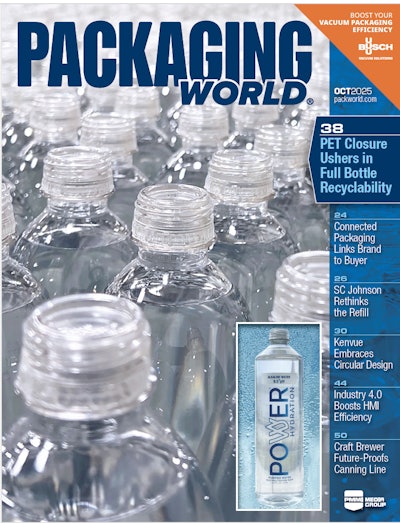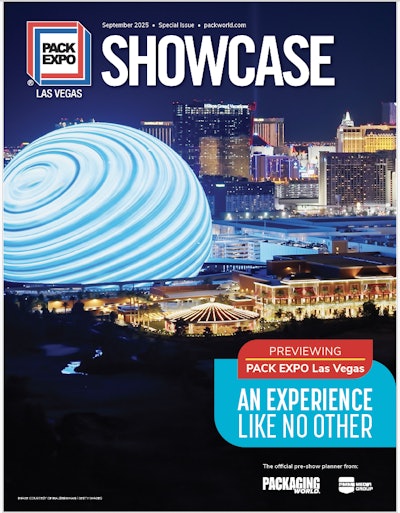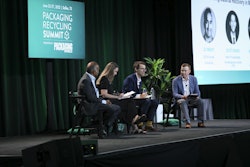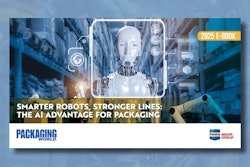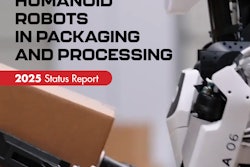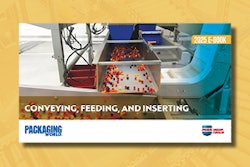Machinery buyers, machinery builders, technology suppliers, integrators, consultants, and a number of other stakeholders in the smart packaging and line integration arena gathered in Copenhagen, Denmark, this past March at the Microsoft Development Center to attend an OMAC conference called “Smart Packaging Automation with PackML & OPC UA.”
OMAC, of course, is the Organization for Machine Automation and Control, and PackML is the ISA standard TR88.00.02 developed by OMAC that defines a common approach, or machine language, for automated machines. As for OPC UA, or OPC Unified Architecture, it’s a machine-to-machine communications protocol for industrial automation that was developed by the OPC Foundation.
The goal of the Copenhagen conference was to share information on how the PackML unit/machine Implementation Guidelines from OMAC can reduce time and costs of integration of equipment. Through live implementations and user stories, attendees learned how PackML can be used as a standard interface to facilitate optimal integration between machines and higher-level supervisory control systems on the factory floor.
Packaging World asked a few of the conference speakers to reprise their Copenhagen presentation over the phone. Their comments follow.
‘Exciting time for OMAC’
Appointed early this year as co-chair of the OMAC Packaging Workgroup (along with Uwe Keiter of Lenze), was Lead Software Engineer Lee Smith of Mettler Toledo. That firm specializes in product inspection technology, including checkweighing, metal detection, X-ray inspection, and vision inspection. Smith, who sees the next few years as “an exciting time for OMAC and PackML,” was one of the packaging machinery OEMs who delivered a presentation at the Copenhagen conference.
“One of the things I’ve learned over the last three or four years is that PackML can be applied to achieve many different benefits,” says Smith. “Depending on who or which company you speak to, you might only get part of the story. For example, they may focus on machine control, machine integration, or machine diagnostics.
“Some OEMs adopt PackML for their own benefits even if it has not been explicitly requested by their customers. And then there are CPG companies that like their machines to be PackML-compliant because it simplifies training of their maintenance teams by helping them reach a solid understanding of what the structure is within the PLC. Such companies also like the fact that operators can move from machine to machine on the line knowing they’ll encounter PackML controls on each machine. That same look and feel is so important.
“And then there are systems integrators who value it because it simplifies getting data from the machine into other systems or into high-level systems or into other machines in a common way. That’s where Pack Tags really offer value.”
Another place where Pack Tags have been effective at Mettler Toledo is in calculating OEE (Overall Equipment Effectiveness) at the device level. “Based on the raw values of specific Pack Tags we can do OEE calculations in real time,” says Smith. “We can push all the raw tag values out and we can push out the pre-calculated OEE values as well. For now these are just calculations on Mettler Toledo devices, but we’d like to standardize these calculations throughout OMAC, and that is one of the things the OMAC Packaging Workgroup is focused on.”
Smith says that while PackML has excelled with PackTags, which are well defined data points, what it doesn’t do is define an actual communications transport protocol. This, he feels, has been a bit of an Achilles heel where PackML is concerned.
“But now, thanks to our cooperation with the OPC Foundation, we will have a de facto and supported communications protocol as part of PackML,” says Smith. “This is a big deal. If you look at other tag-based standards like Weihenstephan, not only did they do the tags but they did the communications protocol, too. With PackML on course for the development of such a protocol through our OPC UA collaboration, I think this is what’s really going to make PackML a true end-to-end solution. We’re looking at standard mapping to OPC UA, which is the de facto protocol for Industry 4.0. The general consensus is that OPC UA, the only widely accepted vendor-agnostic communications protocol, has a real chance of phasing out a lot of the competing fieldbuses and ending what’s come to be known as ‘the fieldbus wars.’ Especially with some of the advances they’re doing with TSN (Time Sensitive Networking), which will bring a level of determinism to Ethernet communications that can be leveraged by OPC UA. Also promising is what we’re seeing in OPC UA Pub/Sub.” For more on Pub/Sub, go here pwgo.to/2915.
Replacing home-grown tags
Another packaging machinery OEM on the program was Norden, which was represented by Peter Jarlvik, Electric & Electronic Engineer Project Leader. Jarlvik says that 10 or 12 years ago his firm, a maker of tube-filling systems, had its own home-made methods of getting data from the plant floor to high-level SCADA systems. “We had a number of tags, PackTags of our own I guess you could say, that were described in a document that said, in effect, this is running, this is stopped, and so on. But then a customer would ask for the status of something out of the ordinary, like is the machine’s product pump running? Each time we set out to meet a new request like this, we tried to keep things the same, or standardized, but we just weren’t that successful. Now with PackML in place, not only are we more standardized internally, we know that other machine makers around the world are using the same standard.”
PackML benefits machine-buying customers, notes Jarlvik, because once operators are used to it, they can go from one machine to another and know—quickly and definitively—what state each machine is in. But Norden as machine builder also gains by embracing PackML. For one thing, says Jarlvik, more customers are asking for it on the machines they buy, so having it in place is obviously helpful. “But maybe the best part for me as an engineer,” says Jarlvik, “is that when we approach the next machine to be built and installed, we don’t have to discuss in detail how machine-to-machine data exchange should take place. Also streamlined is the connection between the machine and MES or SCADA or ERP at a higher level. Some 90% of the decision-making about coding and such is already in place. It means less code-writing and less programming, which leads, by the way, to quicker installations.”
Tetra Pak ‘fully on board’
With net annual sales in the range of 12 billion euros and with Tetra Pak packages available in more than 170 countries, few packaging machinery OEMs are larger or more globally represented than Tetra Pak. According to Filippo Serafini, Development Engineer at Tetra Pak, the firm has participated actively in the OMAC Packaging Work Group for the past few years, and is, in Serafini’s words, “fully on board with the concept.” This in spite of the fact that Tetra Pak has had its own machine integration standard, Tetra Pak iLine®, in place and operating for some ten years.
As Serafini explained to conference attendees in Copenhagen, the Tetra Pak standard is very similar to PackML, right down to having machine states—like “Blocked,” Running, “Ready for Production”—that are comparable to the 17 machine states defined in the PackML standard. Also part of Tetra Pak iLine are line tags that are, for all intents and purposes, the same as PackTags. But Serafini and his colleagues have watched PackML develop, and he now believes it is “mature” enough to be implemented in parallel with Tetra Pak iLine. Essentially, customers would have a choice of which interface, Tetra Pak iLine or PackML, they wish to use.
Ultimately what Tetra Pak seeks to do, and Serafini says he sees PackML as a potentially effective tool in doing it, is to tighten up line installation and commissioning efforts in three key areas:
• Reduce the deployment effort: the overall time spent to install, start up, and fine tune a new line is huge and usually requires skilled personnel.
• Minimize the engineering tasks: when a line is installed and configured, a system specialist is required before the machines can be properly integrated, and it would be better if this could be simplified and even automated.
• Manage the complexity: the line layout can be very different based on customer needs or building constraints. The objective is to be able to manage all the possible layouts without having to develop customized solutions all the time.
The importance of interoperability
Spencer Cramer, CEO of ei3, was one of the integrators on the Copenhagen program. His firm focuses on IoT for manufacturing, and both machine builders as well as brand owners who buy machines rely on ei3’s platform to harness the industrial internet.
Cramer points to a recent report from McKinsey Global Institute indicating that if policy makers and businesses get it right, linking the physical and digital worlds could generate $11 trillion a year in economic value. He also observes that McKinsey sees factories as the largest IoT opportunity and says interoperability between IoT systems is critical. “Interoperability is loosely defined as the ability for computing systems to exchange and understand each other’s data,” says Cramer. “And that is exactly what PackML is doing. So from my point of view, it was very exciting that in the Copenhagen conference we were talking about how capitalizing on OPC UA and PackML will bring about the kind of interoperability that will unleash so much economic value. It’s the business opportunity of a lifetime.”
Among the things Cramer likes about PackML is how practical it is. It reduces the need for operator training because it gives multiple machines the same look and feel. It makes for more robust code, which simplifies startup and makes it easier to troubleshoot. And it makes it easier to integrate disparate packaging machines in a line.
“These are all tactical benefits,” says Cramer. “From my point of view, because ei3 is an IoT company, we also see strategic benefits, where PackML becomes a tool for unleashing all that IoT economic value that McKinsey sees out there. If you can get all of that data about machine states and modes into the cloud and take it beyond the walls of single companies, then you can do things like benchmark comparisons or predictive maintenance solutions.”
Cramer sees three interconnected standards as being vitally important when it comes to tying machines together using PackML. Ethernet is the standard used to enable data to be communicated between the controllers that control individual machines. But on top of Ethernet is OPC UA, another standard that’s rapidly gaining traction. Even Microsoft in their Copenhagen presentation talked about the importance of OPC UA, notes Cramer. It brings structure and context to the data that is flowing between machines so that machines can “understand” what other machines are machines are “saying.” And then there’s the PackML standard, which runs on top of OPC UA and describes what the machine is actually doing or what state the machine is in.
“With those three standards, which are more or less designed to move data around inside the four walls of a factory, what we do is use PackML to provide peak performance metrics outside the factory,” says Cramer. “Using PackML you can put a security appliance on the machines so that you’re able to collect the data over this Ethernet/OPC UA/PackML standard, and then this data is stored in a private cloud. We call ours a remote monitoring cloud, where we have all the machine data. Everything we need to know about machines, not just in one factory, but all factories operated by that company. By applying analytics we can then have applications that share reports, web pages, dashboards, mobile apps—anything that the machine owner or machine builder wants to know is securely delivered to them through the Web. All of this hinges on having a standardized measurement like PackML. Yes, PackML provides abundant practical and tactical benefits inside the factory, but if you take that same standard into the cloud then you have a standardized form of data that lets you do deep analytics, modeling, benchmarking—on a global basis.”
Mettler Toledo’s Smith also likes what ie3’s Cramer had to say at the Copenhagen conference about taking Pack ML beyond the traditional plant walls. “Why use PackML only within the plant?” he asks. “Let’s put PackTags into the Cloud so OEMs can compare the effectiveness of their machines running in different plants around the world and CPG companies can benchmark how plants are performing against each other. This is really an intriguing idea.”
PackML at the airport
John Asbjorn Skajem, PLC Programmer at Beumer Group A/S, was also among the speakers at the conference. Packaging professionals know Beumer as a maker of palletizing and other end-of-line equipment. But Beumer Group also has a division that is a leader in airport baggage handling systems. Skajem, who had experience in the food industry before coming to Beumer, saw an opportunity to bring some of the benefits of the PackML standard to Beumer’s sophisticated tote-based baggage handling system, which is called CrisBag™. Among the things he likes about PackML is how robust it is and how uniquely suitable it is for applications involving motion. “It’s highly modular, too,” he adds. “It’s like having a box of Lego bricks where each brick is a module and they snap together nicely. Just as important, each module is pre-programmed and pre-tested.”
The other thing he greatly appreciates has to do with the fact that the CrisBag system Beumer is about to roll out at airports around the world is available as either a Rockwell or a Siemens platform. “Working on the two different platforms as we do, it’s helpful to use an independent standard like PackML,” says Skajem. “We don’t want to be married to just one platform.”
According to Skajem, here is what PackML had to offer:
• a well proven independent standard
• a well-defined mode/state model
• the benefit of consistent interfaces
• common definitions and terms
• it fits very well into a highly modularized structure
‘Asia is next’
Not on the program but attending the Copenhagen conference was John Kowal, Director of Business Development at B&R and a long-time stakeholder in and advocate of all things PackML. Like the folks mentioned above, he agrees that PackML and OPC UA really fit well together, as do MTConnect and OPC UA (MTConnect is a manufacturing technical standard to retrieve process information from numerically controlled machine tools: www.mtconnect.org).
“Essentially,” notes Kowal, “PackML and MTConnect define data communications standards while OPC UA defines a common communications standard that had long been a missing link. OPC UA has enjoyed a wave of adoption because it offers interoperability all the way from machine to cloud. This is essential for IIoT to take hold. We are also calling out these standards in the Industrial Internet Consortium’s Smart Factory Task Group (www.iiconsortium.org/vertical-markets/manufacturing.htm).
“Another important aspect of the Copenhagen meeting was the announcement of OMAC’s new Operational Technology Advisory Forum, an opportunity for end users to participate in OMAC activities on a limited level at no cost. OT advisors can participate in committees and provide feedback alongside full corporate members who can also hold leadership positions and have voting rights.” For more on this new advisory forum, visit www.omac.org/membership/operational-technology-advisory-forum/.
“The Copenhagen conference was special because it marks the growing adoption of these standards across European machine builders and end users,” concludes Kowal. “Asia is next!”
OMAC PackML at The Automation Conference
Copenhagen isn’t the only location where conversations about PackML have been percolating. The May 23-24 Automation Conference & Expo, sponsored by the PMMI Media Group, included a half-day Workshop on PackML that took place one day ahead of the conference itself. Similar workshops have been held in years past, but new this year was a hands-on training component delivered by Rockwell Automation and Siemens. Shown here is one of the groups of workshop attendees. By all accounts this hands-on element was a big plus compared to years past, and the plan is to repeat it at The Automation Conference in 2018. For more information, email ([email protected]) or phone (859/391-0130) Brent Meyer Associates.
